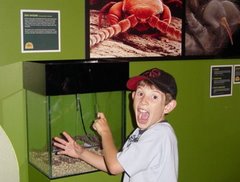Mel asked "What are traditional methods of finding out about your audience and is the internet affecting the way you do audience research?"
Audience research is a discipline of museum practice that provides information about visitors and non-visitors to museums and other cultural institutions, influencing the ways museums think about and meet the needs of their audiences and stakeholders. Audience research is also a strategic management tool that provides data to assist museums more effectively plan and develop exhibitions and programs; to meet their corporate goals; and to learn as organisations.
In audience research a range of methods are used to address issues such as who visits; motivation; behaviour; satisfaction and learning; as well as who does not visit and why. Areas examined include visitor demographics, visitor behaviour, leisure habits and learning strategies. Methods are chosen in accordance with the questions that need to be answered.
In a 1990 paper, Chan Screven noted that the most popular methods inlcude structured and open-ended interviews, questionnaires and rating scales, informal conversations, tracing visitor movements through exhibits and unobtrusive observations of stops, time spent, exhibit usage, and reactions to mocked-up exhibit components.
Other ways of conducting audience research include video-taping visitor behaviour and audio-taping conversations. Focus groups; telephone surveys; and online surveys and panels are also employed to research current and potential audiences as well as non-visitors.
A list of beginning readings about audience research in museums can be found on the
FAQ section of my website - on there you'll also find a downloadable list of beginning references.
I also wrote a paper on the history and practice of audience research in cultural institutions: Kelly, L. (2005). Evaluation, Research and Communities of Practice: Program Evaluation in Museums. Archival Science, 4(1-2), 45-69. This paper contains a good list of references. More information about it can be found at the publishers' website.
I'll get to the internet part of your question shortly.
Saturday, May 05, 2007
Subscribe to:
Post Comments (Atom)



1 comment:
Lynda
my next question is: once you do the research and compile all your visitor feedback, how does this information then feed back in to the museum? As a jaded ex public servant, i know that one can do all the research in the world, but it is in the application of that information that it becomes meaningful. How important is it in influencing exhibition ideas, reviews, changes and how important should it actually be? Should audiences get what they want, or should a museum's role be to challenge them, to offer them experiences that they couldn't conceive of in the first place and so open up new ways of viewing the world?
Post a Comment